The Alternative Story: A Review

We are starting a series of articles where we will be reviewing some enrichment centres which are competing in our year-long competition of great service providers in Singapore. We will be evaluating the service provider along 4 specific points:
- Physical visit to the centre
- Courses
- Teachers
- Students
Introduction to The Alternative Story
The Alternative Story has about a decade of history, and has 30 odd full time teachers and some part-time teachers who have signed on for at least a year. I visited their Ang Mo Kio Jubilee Square branch. I was unable to talk to any parents or students due to COVID-19, but I did talk to a teacher and the centre manager who were very helpful. The location was quiet and peaceful. I saw an interesting video of a real online lesson, and I’m editing this article with it soon.
1. Physical visit to the centre
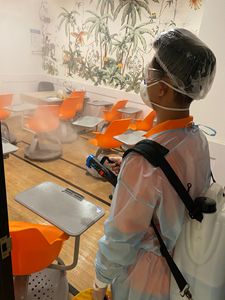
Locations
Ang Mo Kio Jubilee Square, Ang Mo Kio Djitsun Mall, Parkway Centre, Clementi, Bukit Timah Shopping Centre
Security
Of course, given this climate of COVID-19, there’s a need to ensure that the premises remain clean. Deep cleaning and disinfection is done every 6 months for all centres and regular cleaning is done fortnightly.
Each centre has an allocated Safe Management Ambassador to ensure that all Safe Management Measures are followed thoroughly (eg. taking of temperature, checking of symptoms, safe entry checks)
Every centre has a protocol for female front desk administrators to bring students to external toilets. All centres are equipped with CCTV within the premises.
For online zoom classes, teachers will ensure that only valid users are allowed in. They will verify with their administrators if students are using their parents/sibling names. Zoom links are also changed regularly to enhance security.
For onsite classes, teachers will call parents if students did not come to class.
Space for parents to sit while waiting
Most space is taken up for the classes. However, the centres are mostly located in shopping centres, so parents can shop while waiting for their kids. Just outside Jubilee Square, for example, was the hawker centre and a coffee shop where parents can park themselves.
Number of students per class
There is a maximum of 12 students per class. However, it depends on the centre’s classroom capacity. New lower primary classes are capped at 8 students for the first few terms to allow them to acclimatise.
2. Courses
Overview
Primary 1-6 Regular (Paper 1 & Paper 2)
Primary 3-6 Creative Writing (only Paper 1)
Secondary 1-2 Regular classes
Review of the most popular course
The P1-6 Regular programme is the most popular, but they are starting to see a sharp increase in demand for the Secondary 1 classes
Competitions for the children
While there are no any competitions at the centre level, teachers have the autonomy to run their own competitions for their classes. Individual or group points are awarded to incentivise children to be engaged. At the end of the term, these points can be exchanged for prizes.
Fees
P1-6: $54.80 – $58.80 (2 hours)
Secondary 1-2: $80 (2 hours)
Online trial classes are free of charge. Onsite trials are charged per class.
3. Teachers
Permanent vs temporary employment
70% of classes are taken by full-time teachers. Part-time teachers are on an academic year contract and majority (70%) have been around for over 2 years. Some teachers have seen their students from P1 to P6, so these are good long term teachers.
Number of years of experience
Some teachers have up to 11 years of teaching experience in TAS, while a few newer teachers have 2 years of experience. Some of the veteran teachers are also ex-MOE teachers.
Training provided
Their teaching methodology is constantly being reviewed and updated. All teachers, including the experienced teachers, go through regular training annually. New teachers are required to go through 2-3 months of rigorous training, and they have mentors to guide them before starting out with their new classes.
Demeanour of teachers
They are generally well mannered and seems quite dedicated to their jobs. The teacher I spoke to had to take 5 classes per week, which is definitely manageable.
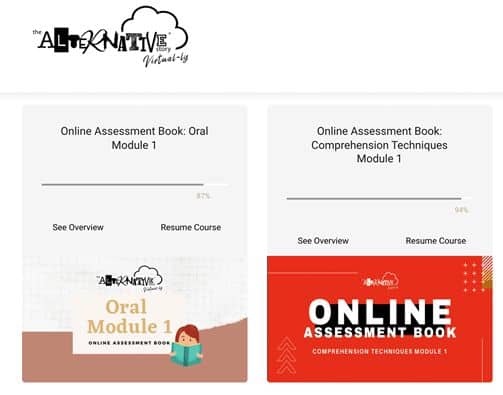

Quality of materials provided for the students
All materials are produced in-house by a materials team. Hence adapting to new changes to the syllabus or trends is quick. The team is always monitoring the current situation to ensure that they remain updated. Materials are revamped to be more structured, precise, scaffolded, bite-size and clear, in order to capture students’ attention and understanding.
Even more materials are provided during the examination period, especially for PSLE students. Detailed answer booklets are provided in the materials such that parents can understand what are the mistakes made by their children.
Additional materials, beside coursework are provided, such as vocab flashcards, using mnemonics to help students remember spelling better.
Creative writing books are given together with course materials to enhance students’ learning.
Some of their in-house materials are also sold to students are a discounted price, while all online students will receive their materials via free doorstep courier services.
There is also on Online Assessment Book where students can access additional materials for revision and practice.
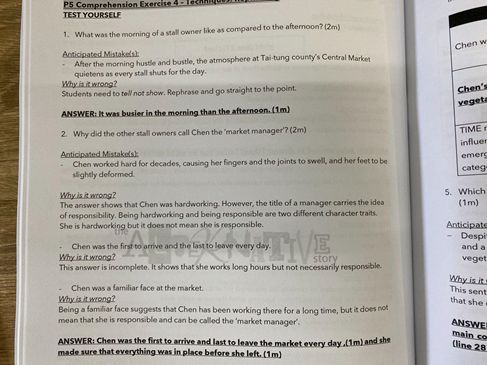
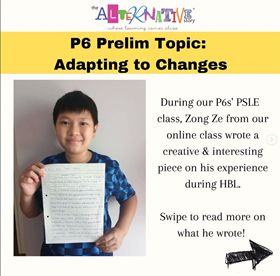
Are there any fun learning factors?
The goal is to communicate with students in their own “language”. Sometimes, inhouse TikTok videos are used to teach composition phrases and techniques. These help to engage the students more effectively and ignite their interest and excitement for the language. To motivate students, prizes are awarded when students excel.
Are there any special method the school applied for learning?
In an ideal world, creative writing is an art where a student’s writing skills allow them to express themselves freely. However, they first need a strong writing foundation. To teach creative writing effectively, a 4-stage Composition Framework is used. Each stage builds on the previous one. Students are brought through this in their journey with the school.
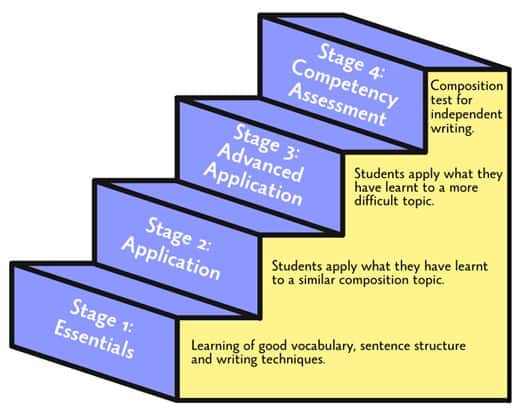
4. Students
Levels
Primary 1 to Secondary 3 (6-15 years old)
Plans are afoot to handle K2 and Secondary 4 classes by the end of the year.
Any pre-qualifications?
There are no entrance tests. Some parents and students come because they want to find a love for the language while others are just worried about their grades. The motto in TAS is to celebrate improvement and excellence, and not perfection.
For most students, they first start with a trial class to see if they are okay with the learning pace. When they have nailed the basics, they will be moved on to the more advanced classes. However, P1 students are required to be able to read and write basic words independently. Assessment will be done by the teacher during the trial lessons.
Conclusion:
In general, TAS is a well accomplished enrichment service with a rich history. All new teachers are well trained and mentored. They seem to have gotten comfortable with hybrid classes (a mixture of physical and online students) and is likely to continue in this mode until the pandemic ends.
